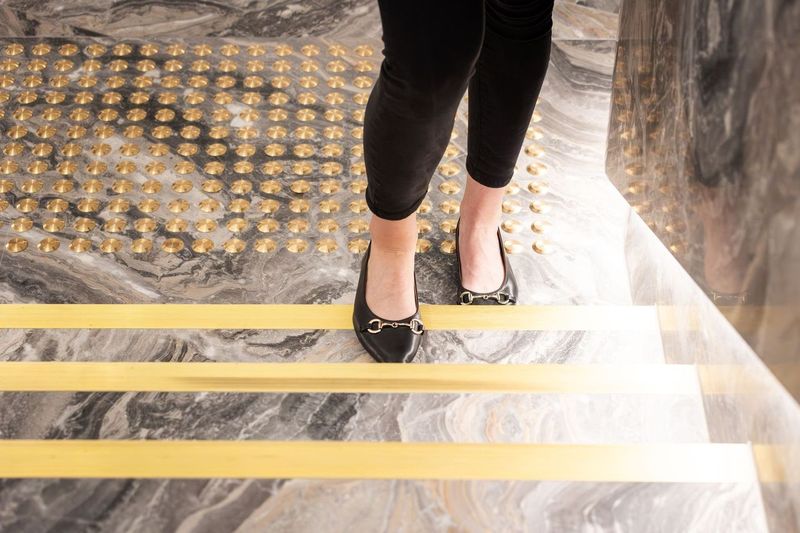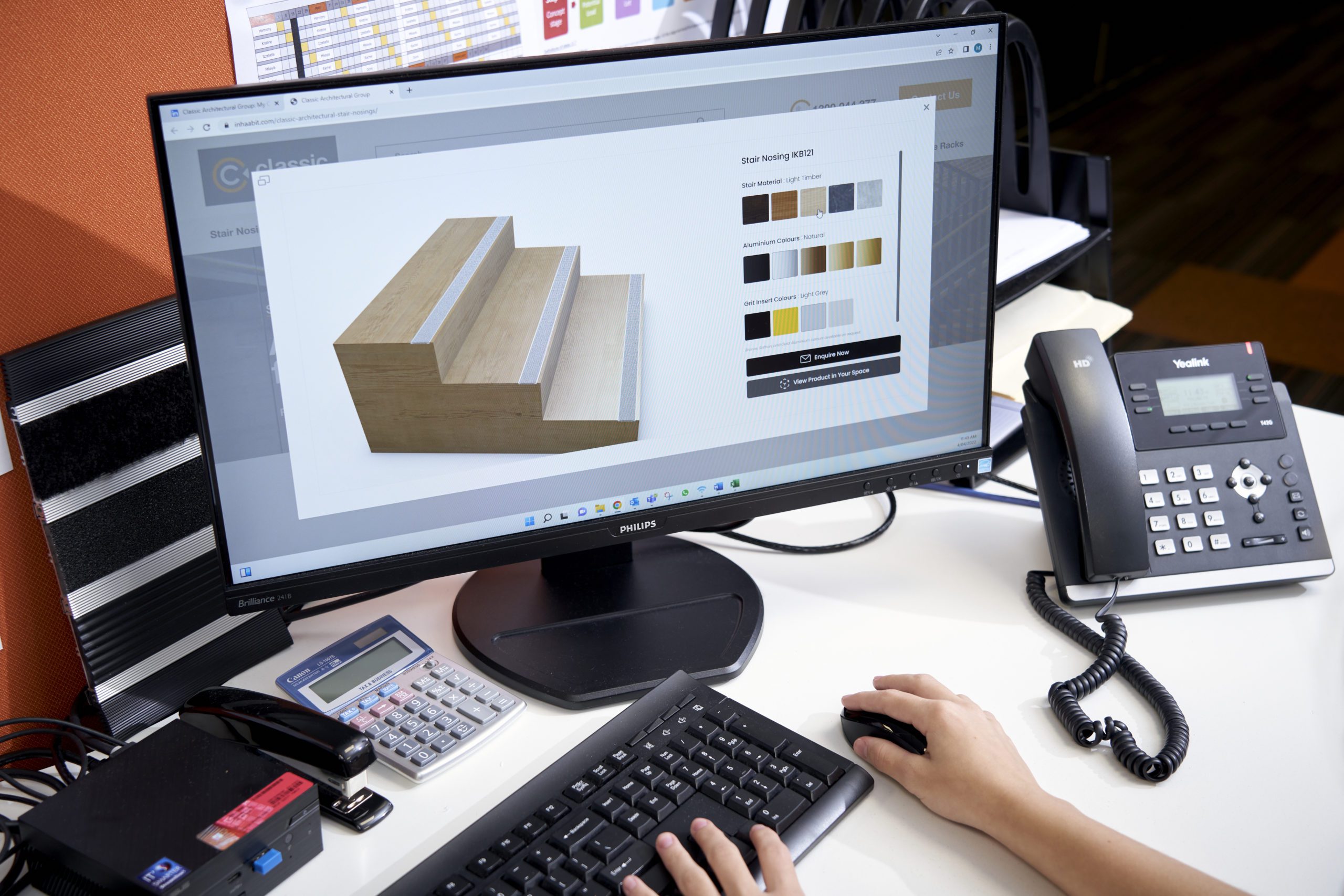Enhancing access while minimising safety risks, stair nosings are a mandatory compliance requirement
Updated: 19 June 2024
Public stairways account for over 60% of slip, trip, and fall deaths in buildings. They require the installation of precise visual cues to help people ascend and descend steps safely. Poor stair design and construction principles, combined with poor lighting or wet conditions, present imminent risk factors when not proactively addressed.
Stair nosings are a great way to ensure stair and floor safety for everyday pedestrian traffic. The ‘nose’ of a step is where people put their feet and weight on the stair, leading it to wear out over time. Installed to prevent the risk of slips and falls, stair nosings are profiled strips of material, commonly aluminium, fitted to the edge of steps (a.k.a. the ‘nose’) to provide an anti-slip surface.
Installing high-quality stair nosings minimises costly safety risks, adds a sense of security, and helps prolong the wear of the stair tread and the floor-covering product used on the stairs. Of even greater importance, all stairways must be designed to empower those with vision impairments and disabilities with confident and safe access.
Are stair nosings mandatory?
Yes, they are.
According to AS1428.1, Australian Standard Design for Access and Mobility Part 1, stair nosings are a general requirement for access across all new building work.
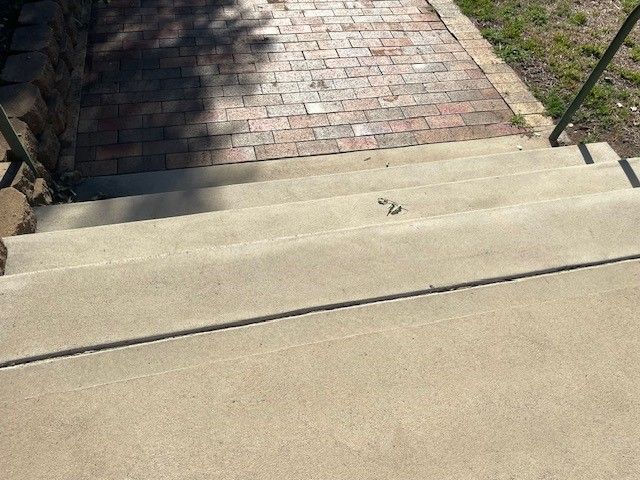
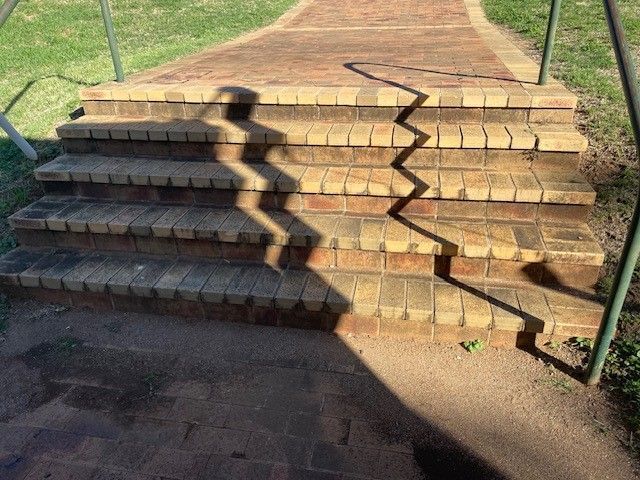
The standard also sets out the minimum requirements according to layout and application, providing access for more people with disabilities and addressing a wide range of building design elements.
Where are the standards applicable?
The AS1428.1:2021 and AS4586:2013 standards are applicable in various environments where public access is provided, including but not limited to;
- All commercial developments
- Any residential apartment development
- Rental and holiday properties with public access
Outline of the current Australian Standards – AS1428.1:2021 requirements
AS1428.1 – Visibility
Stair nosings must:
- Stair nosings must span the full width of the path of travel.
- Use a single, continuous contrast strip between 50 and 75mm wide. Do not use multiple strips.
- Place the contrast strip no more than 15mm from the front edge of the step.
- If the contrast strip extends down the front of the stair, it should not exceed 10mm to avoid confusion about the step’s edge.
- If the nosing body blends in with the step and is clearly different from the contrast strip, it can extend any distance down the riser.
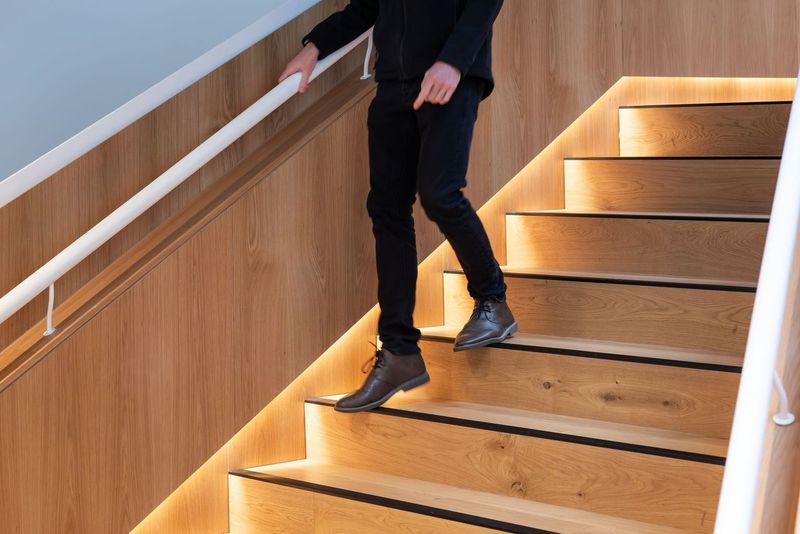
AS1428.1 – Luminance Contrast
Outlining the specific requirements for Luminance Reflectance Value (LRV) of stair nosings, AS1428.1:2021 details how reflective and visibly contrasting stair nosings should be. Luminance Reflectance Value (LRV) measures the contrast between the stair nosing and the surrounding surfaces, helping people with vision impairments see the edges of stairs better.
- To ensure good contrast, stair nosings should have a different light reflectance value (LRV) from the nearby walking surface.
- The contrast strip should always have at least 30% luminance contrast with the floor or background.
- If the vertical edge (turndown) is more than 10mm, the contrast strip should have at least 30% luminance contrast with both the turndown and the stair surface.
For more information on LRV, please refer to page 5 of our Stair Nosing Compliance Guide.
AS1428.1 – Dimensions for Installation
- If the stair nosing goes beyond the face, it counts as part of the riser – the riser can be vertical or slanted backward up to 25 mm.
- The maximum riser height for any stair is 190 mm. A finished riser height of 185 mm is recommended to accommodate 5 mm for additional floor finishes and stair nosings.
AS1428.1 – Slip-Resistance Rating
- Stair nosings should have a slip-resistant surface to reduce the risk of slips and falls.
- Measured using a pendulum slip resistance tester, stair nosing materials must meet or exceed the required slip-resistance rating, as outlined in the table below:
| Dry Surface (Internal) | Wet Surface (Exterior) | |
| Tread surface | P3 | P4 |
| Nosing or landing edge strip | P3 | P4 |
| Ramp not steeper than 1:8 | P4 | P5 |
AS4586:2013 covers specific slip resistance requirements and classifications, the slip ratings range from P0 to P5. The higher the number, the lower the risk of slipping. Stair nosings with a P3 slip rating are suitable for internal stairs, while stair nosings with a P4 or P5 rating have a very low slip risk when wet and are therefore suitable for exterior use.
You may need to provide certification and documentation of slip resistance test results to show compliance with the standard.
Please refer to our Stair Nosing Compliance Guide to learn more about slip-resistance requirements, classifications, and pre-installation testing.
AS1428.1 – Stair Nosing Profile
Stair nosing profiles can have the following:
- A sharp edge
- A rounded edge with a radius of up to 5mm
- A bevelled edge up to 5mm x 5mm at the tread/riser intersection
AS1428.1 – Durability
Stair nosings must be durable and able to withstand the wear and tear of regular use.
Proper cleaning, maintenance, and periodic testing are also recommended to ensure ongoing slip resistance compliance.
Outline of Fire Safety Requirements (according to NCC 2022)
The Building Code of Australia (BCA) assigns fire resistance ratings (FRR) to building materials, including stair nosings, based on their ability to withstand exposure to fire without failure.
The ratings indicate the duration for which a material or assembly can maintain its strength, integrity, and insulation during a fire. Building materials, including stair nosings, must pass fire resistance tests per the testing standards outlined in the BCA.
In addition to the compliance guidelines set by Australian Standards for stair nosings, understanding and adhering to the BCA’s fire safety requirements is essential for stairway safety and accessibility.
AS1657-2018 Australian Standards for Stairs
To ensure compliance, select and specify your stair nosing before designing and building your staircase. The Australian Standards state that the maximum riser height for any staircase is 190 mm, so you must account for any additional height added by the stair nosing beforehand.
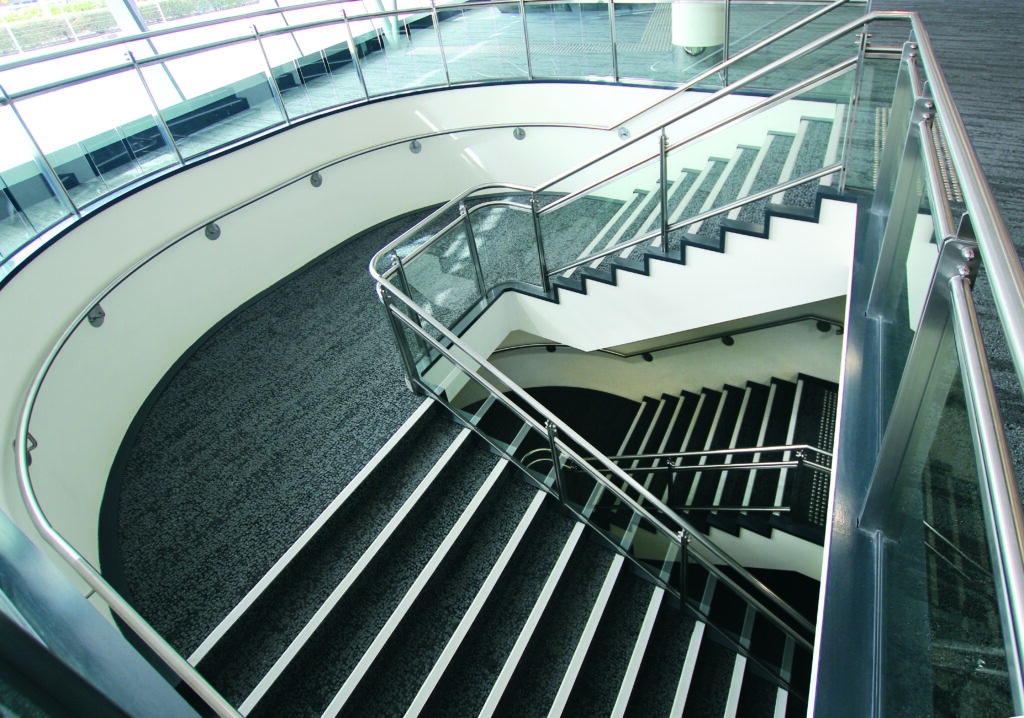
AS1657-2018 outlines essential stair tread and riser requirements affecting your stair nosing selection.
Stair Treads
- Minimum depth: 240mm
- Maximum rise: 190mm
Risers
- Minimum height: 115mm
- Maximum height: 190mm (including stair nosing)
Stairs and Landings
- Must be level
- Minimum width: 900mm
Tread Surface
- Must extend across the entire width of the stairway
- Must be slip-resistant, with a slip-resistance classification per AS4586:2013
- Slip-resistant nosings must be installed on stairs where there is a risk of slipping and must visibly distinguish the edge of the tread
If your staircase has already been built with risers at the maximum height of 190mm and you still need to add stair nosings, don’t panic! The team at Classic Architectural Group can still offer practical, compliant solutions.
How can Classic help you achieve your stair nosing compliance requirements?
Classic Architectural Group offers over 40 years of experience to help you navigate compliance easily.
In addition to our expansive range of safety and access solutions, we offer in-house services and tools to keep your project compliant and on track.
Classic’s Stair Nosing Compliance Guide

Designed to simplify and clarify your stair nosing compliance requirements, we’ve compiled a complete guide that covers the following:
- The importance of compliance, including the relevant codes, standards, and applications
- AS1428.1 Requirements (including the 2021 update)
- AS4586:2013 Slip Resistance Classifications
- Fire Safety Requirements (NCC 2022)
- How Classic Architectural Group can help you navigate compliance with ease
Click here to download your copy today.
FREE LRV Calculator
Use our free online tool to calculate the luminance contrast value for dry and wet readings, with a Pass or Fail to Australian Standards. You will receive instant readings and an email report.
Fire & Slip-Resistance Reports
We provide comprehensive fire and slip-resistance reports for all our products, giving you peace of mind when choosing the most appropriate and compliant solutions for your projects. You can download these reports from the individual product pages on our website, or easily access them through our resource hub.
Installation & Consultation Services
Classic offers both installation and consultation services. Our installation service covers all our products, while our consultation service is available for any questions or guidance regarding our products and their compliance with Australian Standards.
Visualise It: Classic’s 3D & Augmented Reality (AR) Tool
While our 3D/AR technology isn’t specifically used for compliance purposes, ‘Visualise It’ is a very helpful online tool for envisioning what the product will look like in your selected combination within your actual space.
From design to installation, rely on Classic for complete floor and stair safety solutions
Complementing your stair nosing requirements, we can coordinate an entire floor and stair safety solution, including tactile indicators and commercial entrance matting. Our consultative approach allows you to put your best foot forward by listening to your design goals and understanding your functional requirements.
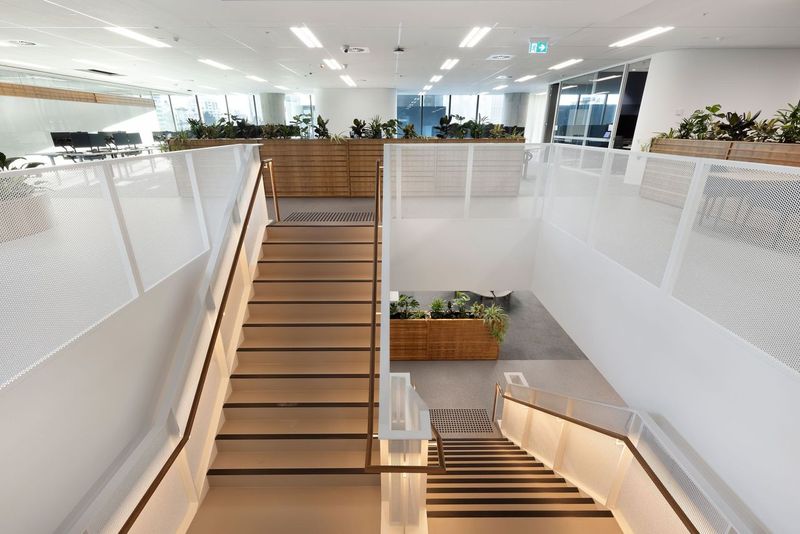
In fact, you can rely on us for the latest compliant solutions for stairs, floors, bike storage, bollards, and car park safety.
We’ll support you with everything from tailored consultation to installation and maintenance to keep your project on track. No job is too big or small—that’s the Classic way. If you are unsure where to start or require further assistance with the abovementioned areas, the Classic team is always here to help!
Get in touch with us by calling 1300 244 377 today.
